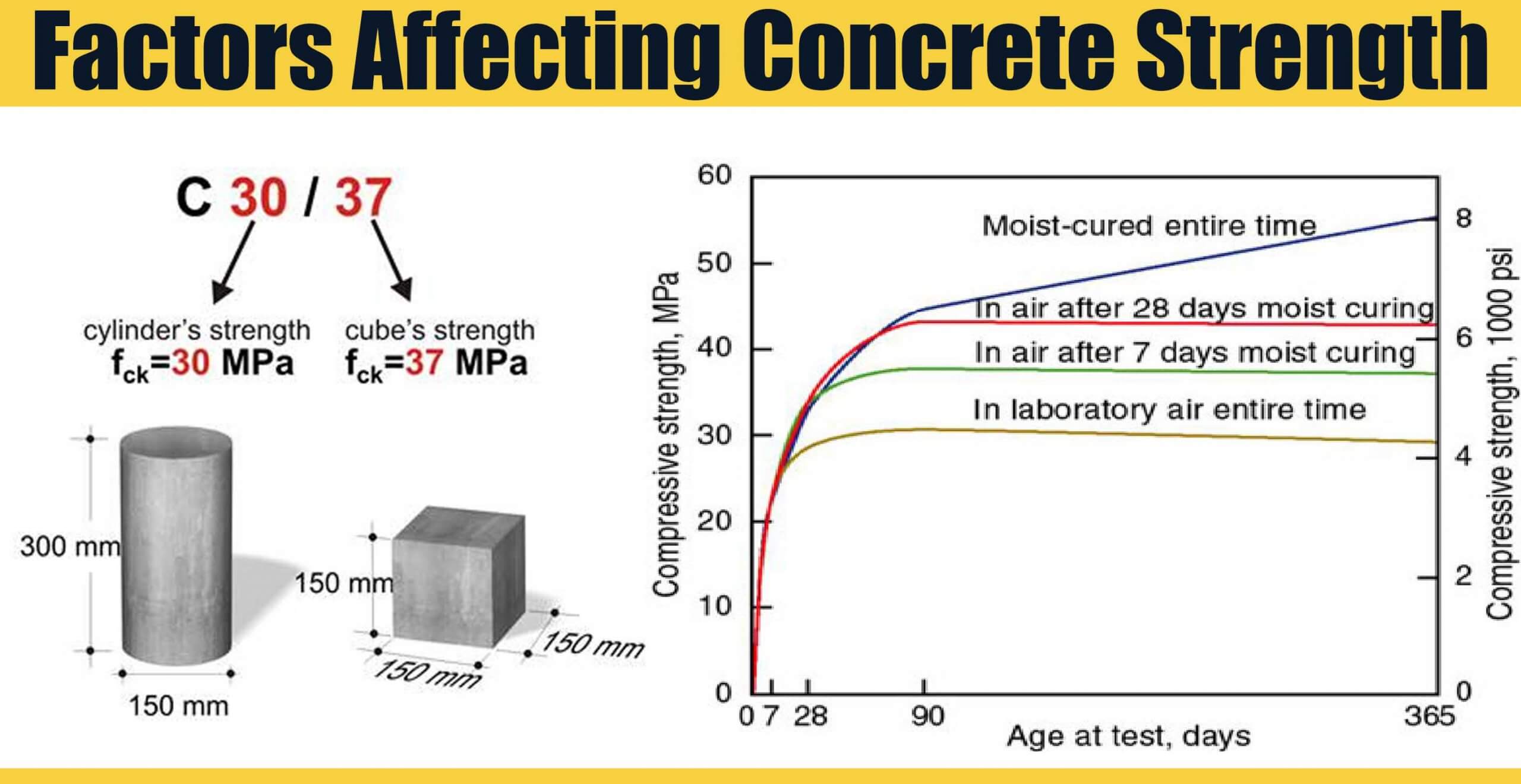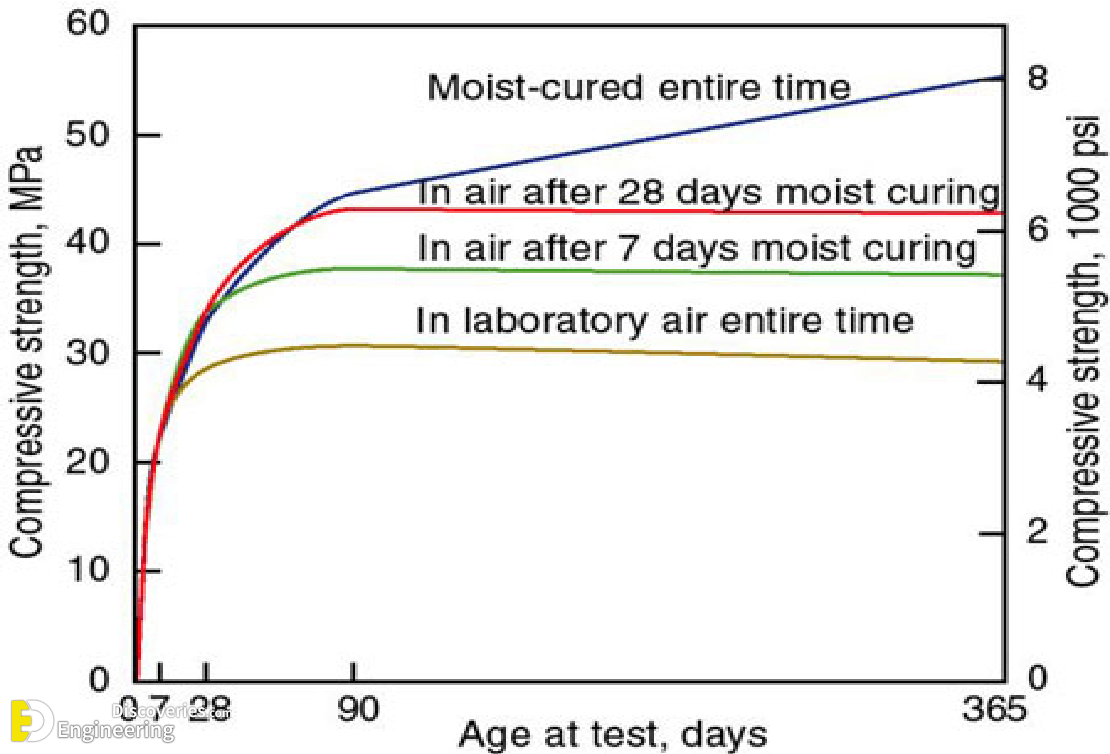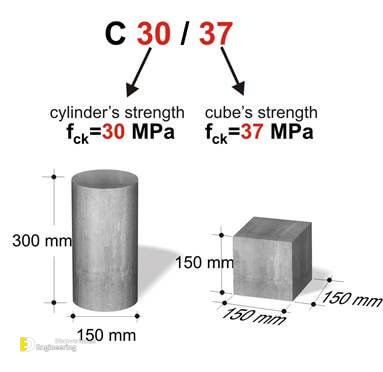There are many factors that can affect the strength of concrete. Some of the more important follow:
Concrete porosity
Voids in concrete can be filled with air or with water. Air voids are on obvious and easily visible example of pores in concrete. Broadly speaking. the less porous the concrete, stronger it will be measured by compressive strength. Probably the most important source of porosity in concrete is the ratio of water to cement in the mix, known as the water to cement ratio’. This parameter is so important it will be discussed separately below.
Factors water/cement ratio
This is defined as the mass of water divided by the mass of cement in a mix. For example. a concrete mix containing 400kg cement and 240litres(=240kg) of water will have a water/cement ratio of 240/400=0.6. The water-cement ratio may be abbreviated to w/c ratio’ or just w/c’. In mixes where the w/C is greater than approximately 0.4. all the cement can, in theory, react with water to form cement hydration products. At higher w/c ratios it follows that the space occupied by the additional water above w/c=0.4 will remain as pore space filled with water. or with air, if the concrete dries out. Consequently, as the w/c ratio increases. the porosity of the cement paste in the concrete also increases. As the porosity increases. the compressive strength of the concrete will decrease
Soundness of aggregate
It will be obvious that if the aggregate in concrete is weak, the concrete will also be weak. Rocks with low intrinsic strength, such as chalk, are clearly unsuitable for use as aggregate.
Aggregate-paste bond
The strength of the bond between the paste and the aggregate is critical. If there is no bond, the aggregate effectively represents avoid; as discussed above, voids reduce the strength of concrete.
Cement-related parameters
Many parameters relating to the composition of the individual cement minerals and their proportions in the cement can affect the rate of strong growth and the final strengths achieved.



